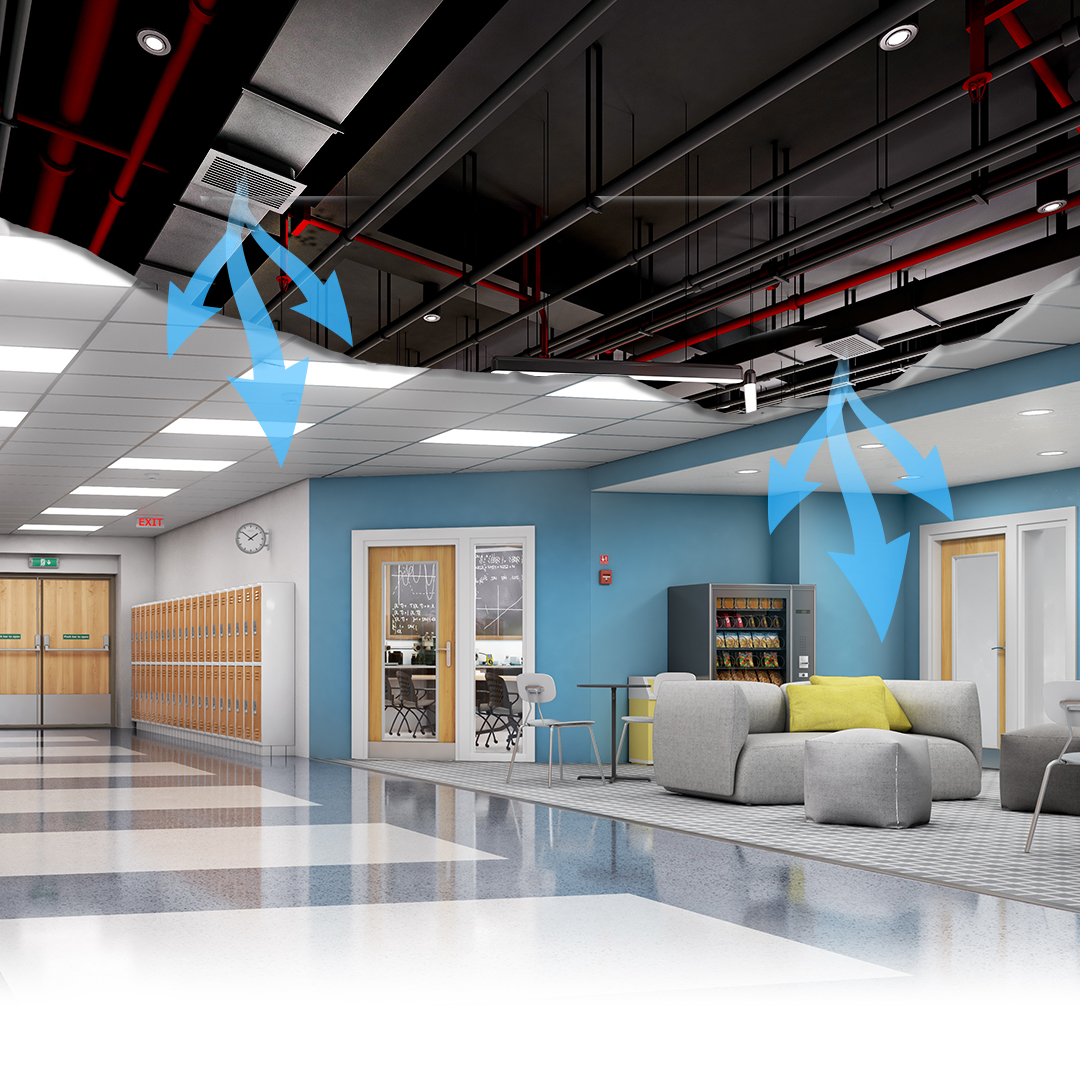Develop an Asthma Management Plan in Your School or District. By managing IAQ, you are already taking an important first step to managing asthma in your school or district..
Due to their developing respiratory system, children are more susceptible to poor indoor air conditions. Continuous exposure to contaminants can increase the likelihood of developing respiratory issues, such as chronic allergies or asthma. In fact, respiratory ailments and asthma are the primary cause of school absenteeism. According to CDC, asthma alone accounts for 13.8 million school days missed each year. Studies have indicated that asthma can have a detrimental impact on student performance, leading to long-term negative effects on learning.
Promote better learning
Improve student health
Reduce contaminants & mold growth

To combat this issue, the EPA has been working on various initiatives to raise awareness, improve indoor air quality in schools, and promote asthma-friendly environments. These efforts encompass measures to reduce asthma triggers within school buildings, such as adequate ventilation and air quality management, and educational programs to help school staff and students better understand and manage asthma.
Not only are students at risk, teachers and other school professionals are also susceptible to having allergic reactions or development of asthma. Studies have shown that teachers lead all non-industrial occupations with the highest rate of work related asthma. The American Journal of Medicine stated asthma within the educational services industry is an occupational health problem. For overall school health, it is important to understand the contributors to Asthma and other respiratory illness, and actions that can be taken with the HVAC system to improve the indoor environment.

Asthma can be triggered by indoor or outdoor pollutants. In schools, indoor pollutants are the leading triggers. Mold, dust, pests, and cleaning chemicals are the most common contributors. The National Institute of Health promotes reducing and eliminating allergens and irritants in the indoor and outdoor environment and to conduct ongoing monitoring and evaluation of Indoor Air Quality (IAQ). Maintaining proper outdoor air ventilation is essential for reducing indoor pollution concentration.

Not only is controlling ventilation a key strategy to fight pollutants that cause asthma, but maintaining proper building pressurization is very important. Building pressure is controlled by accurately controlling all flows in and out of the building. Maintaining a positive building pressure will prevent unfiltered air and moisture from entering through the building envelope. It is important for energy and health that the air from outdoors comes in through the HVAC system where it can be properly heated, cooled, and filtered. The Asthma and Allergy Foundation of America is urging the Department of Education to require IAQ improvements in Schools by improving ventilation. Measuring and controlling airflow rates, filtration, and source control are necessary components to ensure student health and that of school professionals. Learn more about EBTRON Solutions for Schools.

Develop an Asthma Management Plan in Your School or District. By managing IAQ, you are already taking an important first step to managing asthma in your school or district..
Provide a healthy school environment and reduce asthma triggers: Set standards for maintenance, humidity, mold and dust control, and ventilation.
Indoor air pollution is often greater than outdoor levels of air pollution due to a general lack of adequate air filtration and ventilation
The Elementary and Secondary School Emergency Relief Fund (ESSER) and the American Rescue Plan Act represent crucial opportunities for Local Education Agencies (LEAs) to allocate funds for enhancing the indoor environments of schools. These funds are earmarked for general improvements, repairs, and upgrades and extend to critical areas like mechanical ventilation and control systems. By directing resources toward these vital components, schools can take significant steps to fortify indoor air quality and, in doing so, contribute to the broader fight against asthma.
One valuable avenue to achieve these ventilation enhancements is deploying advanced technology, such as EBTRON airflow measurement devices. EBTRON’s state-of-the-art solutions empower schools to monitor and regulate airflow precisely, ensuring ventilation systems operate at peak efficiency. These devices play a pivotal role in maintaining optimal indoor air quality, which is paramount in the battle against asthma.

© 2023, EBTRON, Inc.
